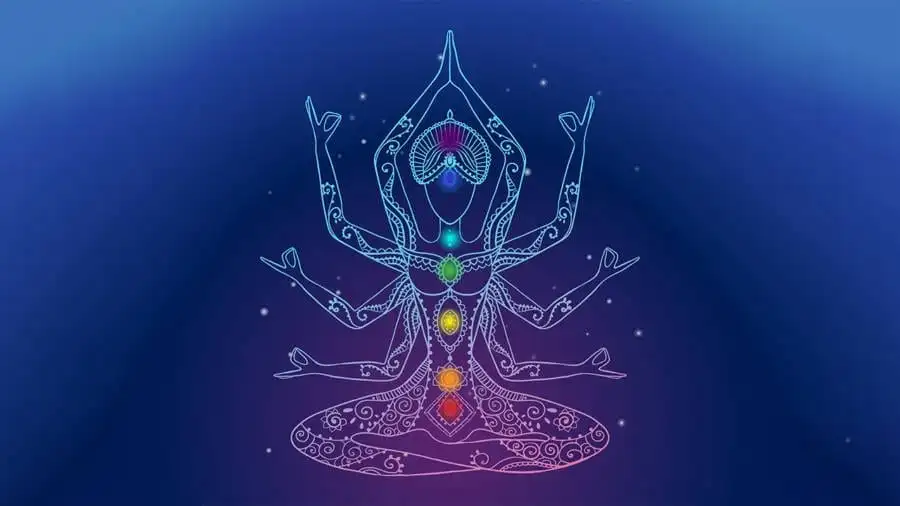“The present moment is filled with joy and happiness. If you are attentive, you will see it.” – Thich Nhat Hanh’s timeless wisdom echoes the core purpose of this ancient practice. Combining rhythmic repetition with focused awareness, it offers a bridge between modern stress and inner stillness.
Rooted in spiritual traditions spanning thousands of years, this method uses sacred sounds or phrases to anchor attention. Unlike silent reflection, it provides a tangible focal point – whether whispered, chanted, or repeated mentally. This duality of structure and flexibility makes it particularly effective for today’s fast-paced world.
Historical records show its presence across Buddhist, Hindu, and even Judeo-Christian practices. The Sanskrit term itself translates to “protector of the mind”, highlighting its original purpose. Modern applications focus on stress reduction and mental clarity while preserving this protective quality.
New practitioners often find the technique more approachable than other mindfulness methods. The repetition creates a natural rhythm that quiets mental chatter. Over time, this cultivates deeper awareness – a skill that extends beyond formal sessions into daily life.
Key Takeaways
- Combines sacred sound repetition with mindfulness principles
- Originates from ancient spiritual traditions worldwide
- Offers adaptable methods (silent, spoken, or chanted)
- Helps manage stress and improve mental focus
- Suitable for both beginners and experienced practitioners
Introduction to Mantra Meditation and Its Benefits
Across continents and centuries, rhythmic sound repetition has served as humanity’s compass for inner exploration. This technique transforms simple phrases into tools for mental clarity – a bridge between daily stress and lasting calm.

Understanding the Essence
At its core, this practice creates a protective mental space. Through intentional repetition, practitioners build resilience against distractions while nurturing spiritual connections. Modern research confirms what ancient traditions knew – regular use lowers stress hormones and improves cardiovascular health.
Historical Threads
Originating over 3,000 years ago in Hindu rituals, these sound-based techniques spread through Buddhist adaptations emphasizing present-moment awareness. Christian mystics later adopted similar methods with phrases like “Maranatha,” while Jewish traditions wove Hebrew prayers into contemplative routines.
Today’s applications range from managing travel anxiety to enhancing sleep quality. Studies show measurable benefits – reduced blood pressure, sharper focus, and emotional balance. Whether seeking peace or deeper self-awareness, this timeless approach adapts to modern needs while preserving ancient wisdom.
Preparing for Your Mantra Meditation Practice
The foundation of any meaningful ritual lies in purposeful preparation. Before repeating your first phrase, consider what draws you to this practice. Is it stress relief, emotional balance, or a desire for spiritual alignment? These reflections shape your journey.

Setting Up a Comfortable and Focused Space
Choose an area where external stimuli won’t compete for your attention. Soft lighting and neutral colors help create mental calmness. Many practitioners use a dedicated corner with a cushion or chair – consistency trains the mind to shift gears faster.
Defining Your Intention and Personal Goals
Clear objectives transform routine into purpose. Start with simple affirmations like “I cultivate patience” or “I embrace stillness.” This mental blueprint guides your focus when distractions arise.
Adjust your posture to support alert relaxation – spine straight, shoulders relaxed. Scan your body for tension before beginning. A minute of deep breathing bridges everyday thoughts and meditative awareness. Over time, these steps become second nature, signaling your system to enter deeper states of concentration.
Effective Mantra Meditation Practice Techniques
The art of effective practice unfolds through three layered stages of engagement. By combining rhythmic recitation with breath awareness, practitioners create a stable foundation for deeper focus. This structured approach helps transform simple phrases into tools for mental clarity.

Integrating Chanting, Breathing, and Repetition
Start by synchronizing your chosen phrase with natural breathing patterns. Matching syllables to inhalations and exhalations stabilizes attention. This initial phase, known as japa, uses repetition to anchor the mind like a metronome guides musical rhythm.
As familiarity grows, shift focus to the sound’s vibrations. Feel resonance in the chest or throat rather than forcing volume. Many find silent repetition enhances internal awareness once the rhythm feels natural.
Aligning Recitation with Mindfulness
Maintain gentle awareness of your body and surroundings during practice. If thoughts intrude, acknowledge them without judgment before returning to the sound. This balance prevents mechanical repetition while nurturing present-moment attention.
Advanced practitioners often notice the phrase pulsing effortlessly – a sign of deep neural integration. At this stage, conscious effort decreases as the mind embraces the rhythm naturally. Regular sessions strengthen this connection, making calm accessible even beyond formal practice.
Integrating Mantras Into Daily Life
Daily routines become sacred when infused with intentional sound. For many practitioners, the true magic begins when their chosen phrases start appearing unprompted – during traffic jams or while folding laundry. This effortless emergence signals deep integration of spiritual tools into ordinary moments.

Adapting Spiritual Practices for Everyday Wellness
Notice how sacred sounds surface while brushing teeth or waiting in line? “This spontaneous recall shows the mind’s natural shift toward calm,” explains a mindfulness coach. It transforms mundane tasks into grounding rituals without extra time commitments.
Creative applications amplify these benefits. Stick inspiring phrases on bathroom mirrors or set them as phone wallpapers. One teacher shares: “I slip handwritten notes into lunchboxes – my family now starts meals with mindful breaths.”
Shared practices create community connections. Office workers report using desktop post-its with phrases like “Breathe deeper” to combat stress. Over 68% of regular users in a recent survey said these reminders improved their workday focus.
Morning coffee sips or evening wind-downs become natural anchors. The key lies in consistency, not perfection. As one practitioner notes: “My commute doubled as practice time – now traffic fuels my calm instead of frustration.”
Elevating Your Meditation: Advanced Practices and Tips
Mastering advanced techniques transforms routine into profound inner discovery. When repetition becomes second nature, practitioners enter ajapa japa – a state where sacred sounds flow effortlessly. This phase marks the transition from conscious effort to natural rhythm, creating mental clarity that persists beyond practice sessions.

The Science of Effortless Repetition
Ajapa japa occurs when neural pathways fully absorb the chosen phrase. One yoga teacher describes it as “riding a bicycle downhill – momentum carries you forward without pedaling.” Research shows this state activates gamma brain waves linked to heightened awareness.
Tools for Sustained Concentration
A traditional mala offers tactile support during extended sessions. This bead string follows a precise structure:
| Bead Count | Primary Purpose | Symbolic Meaning |
|---|---|---|
| 108 | Tracking repetitions | Represents cosmic order |
| 100 counted | Focus measurement | Acknowledges human imperfection |
| 8 reserved | Humility reminder | Honors spiritual teachers |
Advanced users often eliminate gaps between phrases. This creates a continuous sound stream, leaving less room for distractions. One practitioner shares: “It’s like knitting with sound – each repetition loops into the next.”
Crafting Your Sonic Anchor
Personal phrases should resonate deeply yet remain simple. Consider these approaches:
- Traditional Sanskrit terms for spiritual connection
- Short affirmations like “I am grounded”
- Nature-inspired words: “Ocean calm” or “Mountain steady”
Consistency matters more than duration. Start with five focused minutes daily rather than sporadic hour-long sessions. As focus deepens, the practice naturally expands – like roots strengthening before a tree grows taller.
Conclusion
True transformation emerges when ancient wisdom meets modern commitment. Through mantra meditation, individuals discover a bridge between timeless techniques and contemporary challenges. This practice isn’t about perfection – it’s about showing up consistently, letting rhythmic repetition rewire stress patterns over time.
Those who embrace this method often notice subtle shifts first. Morning routines feel calmer. Workday focus sharpens. Even mundane tasks become opportunities for mindful presence. The key lies in viewing each repetition as a step toward lasting change, not just a temporary escape.
Research confirms what practitioners experience: regular engagement lowers cortisol levels while enhancing emotional resilience. Whether using traditional phrases or personal affirmations, the act of returning to your chosen sound builds mental discipline. This skill spills into decision-making, relationships, and creative problem-solving.
Start small – five minutes daily creates momentum. Celebrate progress without judgment. As one teacher wisely notes: “The journey matters more than the destination.” With each session, you’re not just practicing mindfulness – you’re cultivating a lifelong toolkit for navigating complexity with grace.
FAQ
How does this practice differ from other mindfulness techniques?
Unlike generic mindfulness exercises, this method uses sacred sounds paired with intentional breathing patterns. The vibrational quality of specific phrases creates a unique mind-body connection that anchors awareness more effectively than silent observation alone.
Can beginners benefit immediately from this technique?
Absolutely. New practitioners often experience reduced mental chatter within the first few sessions. The rhythmic repetition acts like a cognitive anchor, making it easier to bypass initial restlessness compared to unstructured mindfulness approaches.
What’s the ideal environment for starting this practice?
Choose spaces with minimal sensory competition—dim lighting or natural light works well. Many find early mornings effective before daily demands accumulate. Consistency in location trains the brain to enter focused states faster over time.
How do personal intentions shape the experience?
Clear objectives act as neurological guideposts. Whether seeking emotional balance or creative clarity, defined goals help the subconscious align the sound vibrations with desired outcomes, creating targeted neural pathways.
Can these methods coexist with physical wellness routines?
Yes—the breathwork component complements yoga flows beautifully. Athletes often pair specific phrases with movement patterns to enhance mind-muscle connection, while office workers use brief repetitions to reset posture and focus.
What tools help maintain rhythm during sessions?
Many practitioners use mala beads—108-bead strings common in Eastern traditions. The tactile feedback assists in maintaining pace, while the circular design symbolizes continuity. Digital metronome apps offer modern alternatives for timing repetitions.
How long until noticeable changes occur?
Biological responses vary, but most report improved stress responses within 2-3 weeks of daily 15-minute sessions. Cognitive benefits like enhanced decision-making often emerge after 6-8 weeks as neural plasticity strengthens.
Are there scientifically validated benefits?
Numerous studies document reduced cortisol levels and increased theta brain waves. MRI scans show thickened prefrontal cortex regions in long-term practitioners, correlating with improved emotional regulation and attention control.




























































